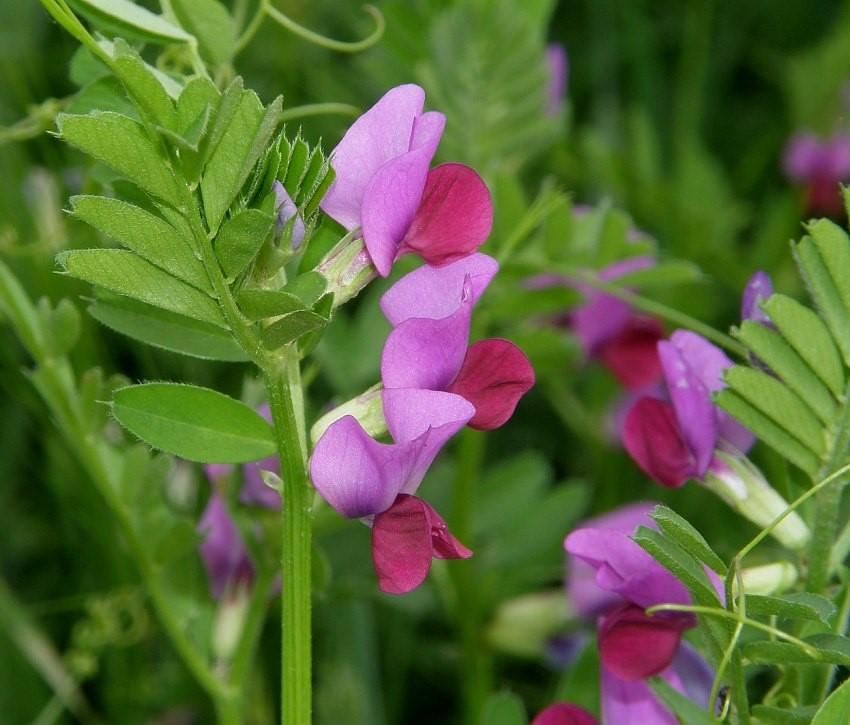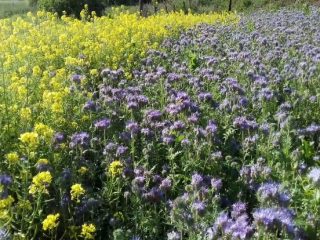Content
To increase the productivity of the garden, control weeds, clean and rest the soil, organic fertilizers are used. Vetch as a green manure deserves special attention, since it has long roots. The undemanding crop is easy to plant and characterized by rapid growth.
Pros and cons of wiki as green manure
Vika has many advantages. For clarity, all positive qualities are shown in the table:
Advantages | Description |
Saturation of the area with nitrogen | Green manure has a developed root system, at the ends of which colonies of bacteria grow. They convert minerals into nitrogen and accumulate it in large volumes. During the process of decay, agricultural plants receive maximum nutrients. |
Improving soil quality | Growing vetch in large quantities loosens the soil. This affects the ability to conduct air and moisture to the roots. The procedure is especially necessary in difficult areas - clayey or loamy. |
Soil sterilization | Vetch contains elements that prevent the spread of infectious diseases, fungi, and bacteria. Consequently, plants grown after green manure will be less likely to get sick. |
Weed control | Vetch takes away nutrients from the grass, slowing down its growth rate. As the crop grows it shades out the weeds. |
Green manure also has a drawback. If you miss mowing time, vetch will fill the entire area. In terms of growth rates, no grass can compare with it. The gardener will have to put more effort into processing.
The stems of the plant are soft. This means that they will lie towards the ground, creating a “cushion”. After rains or snow melts, the soil will become damp and there will be fewer beneficial bacteria in it.

Vetch is distinguished by a large number of shoots; the plant is the only green manure that can synthesize nutrients
On what soils is it used?
The crop does not grow on all types of soil. It is poorly received near swamps, sandstones, and salt marshes.
In fertile soil the pace of development is very fast. If the grass is grown in poor soil, the results will be weaker.
For which crops is vetch green manure suitable?
Vetch is a universal green manure suitable for further cultivation of the following plants:
- zucchini;
- potato;
- tomato;
- raspberries;
- strawberries;
- cabbage;
- pumpkin;
- eggplant;
- watermelon;
- carrot;
- beet.
The culture is used not only in the vegetable garden, but also in the garden. This allows you to reduce the amount of fertilizing for fruits and berries.
When to sow vetch as green manure
Vetch is planted in the spring, after the snow melts.Planting times may vary depending on the region. Usually sown in March or April. When the thermometer begins to show +4 °C, they begin to work.
In June, green manure is used as an intermediate plant. Vika is afraid of large precipitations and has a negative attitude towards drought. If the summer is hot, water regularly. Although there is no fixed time for sowing, it is better to carry out the procedure after harvesting.
In autumn, work begins in the last ten days of September. A few weeks before the onset of cold weather will be enough to build up green mass. In regions that experience warm winters, planting can be delayed until November.
How to plant vetch green manure
First of all, the area is processed - loosened by 18-20 cm. In this case, a flat cutter or cultivator is used. If the garden is less than 100 sq. m, they make do with a shovel. During the process, the remaining debris is removed from the beds - plastic, brick, perennial roots.

A field planted with green manure looks very beautiful
Vetch seeds should also be treated. For better germination, they are immersed in warm water. Stand for 12 hours. The liquid must be changed and heated 2-3 times. After this, the material is left in a solution of potassium permanganate. There is no need to use a high concentration, since before this the seeds were in water. The solution should have a light pink tint. The seeds are then washed under the tap.
Sowings are done in a row. For vetch, a depth of 5 cm will be favorable. If the soil is heavy, the furrows are made smaller - about 3 cm. Per 100 sq. m of land requires 1.5 to 2 kg of green manure.The norm is similar to other crops - rye, oats.
After distribution, the seeds are covered with earth. It's good to have a skating rink. They can walk around the garden bed to improve germination. If there is no transport at hand, you don’t have to resort to processing.

Green manure can be planted in the spring, but vetch is also used for mulching crops in the fall.
The crops should be watered; without this, the material will not sprout. If there is precipitation, the procedure is not carried out.
Care instructions
The grass requires care, as vetch green manure grows quickly. Problems appear during the growth process, when the bushes fall on top of each other. In order for the plant to germinate quickly, it is necessary to control the humidity. The owner will have to balance between heat and flooding. In this case, the vetch will not get burned, and the area will not turn into a swamp.

Green manure is pollinated by insects - butterflies, wasps, ants; this can be used to grow other plants
If fertilizers were not used to grow green manure, they are added afterwards. Saltpeter and nitrophoska (should be used separately) show good results. Beginners complain that they have to spend a lot of water on the solution. Professionals advise spreading dry fertilizer after precipitation. On a dry day, saltpeter and nitrophoska are not used to avoid stains.
In heavy soil, it is more difficult for air and moisture to get to the roots, so the soil is dug up. Increased aeration affects the density of green mass.
When to mow and dig
Mowing begins 30 days after germination. The plant is characterized by rapid growth, so the timing is almost the same. If you wait more than a month, the stems will become woody.In this case, the soil will receive few nutrients, which will affect the yield of further plantings. Agricultural crops are grown by waiting 15 days after planting.
They try to distribute the green manure evenly throughout the area. The cut greens are left for several days. If the height of the stems is more than 30 cm, they are cut off. This will speed up the rotting process. After the chopped greens are embedded, no additional digging is required. Instead, the top layer of soil (8-10 cm) is loosened.

Green manure is sold in garden stores; Usually packages are designed for 1 kg or more
If the vetch has grown quickly, the excess can be saved for the future - as additional feeding. To do this, the greens are finely chopped and added to water. After it sits (7-10 days is enough), the liquid will begin to ferment. The fertilizer is passed through cheesecloth and diluted in equal quantities with water. Water at the root.

As practice shows, tomatoes grown after vetch green manure produce 55% more yield
Sometimes, after mowing, beginners also pull out the roots of green manure. There is no need to do this, they are full of minerals. As already mentioned, the ends of the shoots contain beneficial bacteria responsible for the production of nitrogen. Plants need it, so they save the roots.
Conclusion
Vika as a green manure brings great benefits. It doesn’t matter what the plot is used for: vegetables or fruits. The result is the same: the soil will be enriched with nutrients. However, you need to be careful with planting. The slightest transfusion threatens the appearance of dirt. On the other hand, the crop does not tolerate drought well.Therefore, the owner will have to balance between two extremes.
Reviews on the use of vetch green manure








